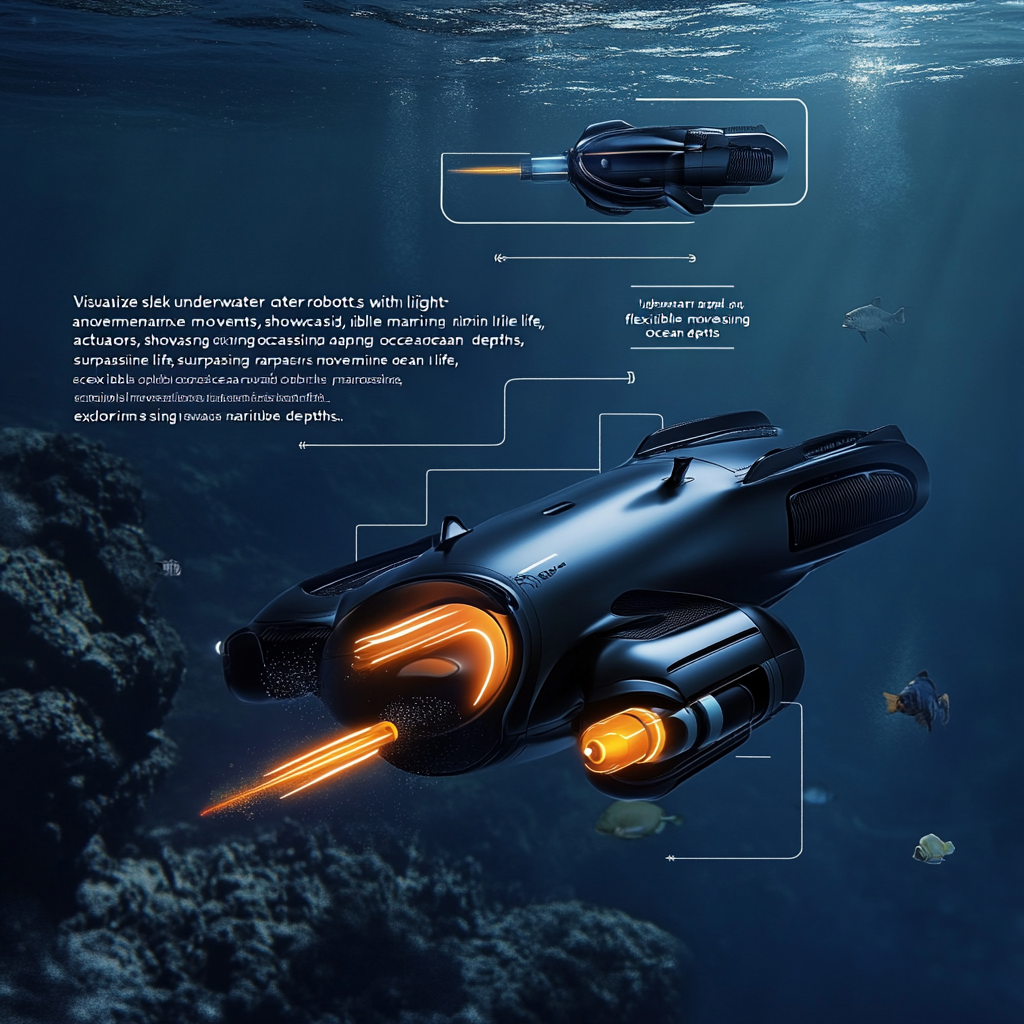
Underwater robots flex new muscles: Light-driven actuators outperform mammalian muscle
In the dark, mysterious expanse of our planet’s blue heart, where sunlight struggles to penetrate, an exhilarating transformation is brewing. Underwater robotics, once tethered to the pitiful limitations of traditional motors and hydraulic systems, has surged into a stunning new era. Enter stage left: light-driven actuators! These little marvels of engineering don’t just strut their stuff by emulating the sinuous movements of aquatic creatures; they flat-out outperform even the most impressive of mammalian muscles in key performance metrics such as flexibility, speed, and energy efficiency. Buckle up, dear reader, for we are about to plunge headfirst into the depths of this revolutionary technology that promises to flip underwater exploration on its head.
The trials that underwater robots have faced over the years would make any engineer weep. Picture this: you’re trying to send a robot into the ocean, but it’s got wires, batteries, and motors. It’s like sending a brick into a swimming pool and expecting it to perform a perfect dive! Water exposure is the sworn enemy of all those mechanical bits. If you thought your pet could chew through wires, just imagine the havoc a little saltwater could wreak. Even conventional photothermal materials are sent packing by the cooling embrace of the ocean depths, proving that Mother Nature doesn't play nice. However, oh how times have changed! With the advent of light-driven actuators, all those pesky limitations are being tossed aside like a lobster out of season. We’re entering an age of unprecedented agility, efficiency, and adaptability. Talk about evolution in action!
So, how exactly do these sophisticated actuators operate? Get ready for some science, folks! They deploy azobenzene-functionalized semicrystalline liquid crystal elastomers (AC-LCEs) – say that five times fast! These futuristic materials are like the shape-shifters of the robotics world. They respond to light with a whimsical flair, bending, twisting, or stretching as if they have a mind of their own. Unlike their clunky, power-hungry predecessors that depend on electrical energy or pneumatic pressure, light-driven actuators are powered by nothing more than the simple rays of light. Yes, folks, we’re talking about a technology that's more wireless than a coffee shop. Welcome to the future!
Now, let’s get to the crux of the matter: these light-driven actuators aren't just good; they are downright impressive. When you stack them up against mammalian muscle, the results are beyond eye-opening. Sure, mammalian muscle boasts its own brand of efficiency and raw strength – but there’s a catch. Speed and flexibility, that elusive combination, often escape its grasp like a fish from a hook. But, lo and behold! Light-driven actuators flash past their biological counterparts with speeds and agility that redefine the word “nimble.” They’ve got energy efficiency in spades, setting a whole new benchmark for what underwater robotics can achieve. It’s like comparing a pair of well-worn sandals to a sleek pair of racing sneakers. There’s just no contest.
Now, what does this mean for the future? Let’s just say the potential here is as vast as the ocean itself! With these revolutionary light-driven actuators, we can create underwater robots that aren’t just smarter; they’re more flexible, faster, and ultimately more efficient than ever imagined. This is a game-changer, opening doors to an array of applications – from studying marine ecosystems and conducting underwater construction to monitoring environmental changes. It’s as if we’ve opened a treasure chest of unexplored ideas, with researchers eager to harness every drop of innovation these devices bring to the table. The excitement is palpable, and rightly so!
Innovation, dear reader, is the heartbeat of progress, and light-driven actuators are its vibrant, pulsating rhythm. They embody what human ingenuity can achieve when we marry creativity with technology. As we push the boundaries of possibility in underwater robotics, we are reminded that the seemingly unattainable is often just a leap of invention away. Whether you’re a passionate marine biologist hungry to unlock the secrets of the ocean or simply a curious soul wanting to understand how light can revolutionize robotics, one thing is certain: this technology is on the verge of rewriting the narrative of underwater exploration forever.
And if your appetite for cutting-edge technology doesn’t end here and you want to keep your finger on the pulse of the latest innovations like these, then there’s only one thing left to do. Dive into the future with us! Want to stay up to date with the latest news on neural networks and automation? Subscribe to our Telegram channel: @channel_neirotoken. Your future self will thank you!

